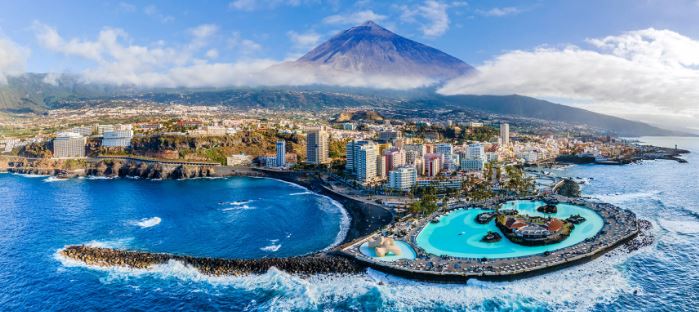Canary Islands

The Canary Islands (/kəˈnɛəri/; Spanish: Canarias, pronounced [kaˈnaɾjas]), also known informally as the Canaries, is a Spanish archipelago in the Atlantic Ocean, in a region known as Macaronesia. At their closest point to the African mainland, they are 100 kilometres (62 miles) west of Morocco. They are the southernmost of the autonomous communities of Spain, and are located in the African Tectonic Plate. The archipelago is economically and politically European, and is part of the European Union.
The eight main islands are (from largest to smallest in area) Tenerife, Fuerteventura, Gran Canaria, Lanzarote, La Palma, La Gomera, El Hierro and La Graciosa. The archipelago includes many smaller islands and islets, including Alegranza, Isla de Lobos, Montaña Clara, Roque del Oeste, and Roque del Este. It also includes a number of rocks, including those of Salmor, Fasnia, Bonanza, Garachico, and Anaga. In ancient times, the island chain was often referred to as “the Fortunate Isles”.[6] The Canary Islands are the southernmost region of Spain, and the largest and most populous archipelago of Macaronesia.Because of their location, the Canary Islands have historically been considered a bridge between the four continents of Africa, North America, South America, and Europe.
In 2019, the Canary Islands had a population of 2,153,389[2] with a density of 287.39 inhabitants per km2, making it the eighth most populous autonomous community. The population is mostly concentrated in the two capital islands: around 43% on the island of Tenerife and 40% on the island of Gran Canaria.

